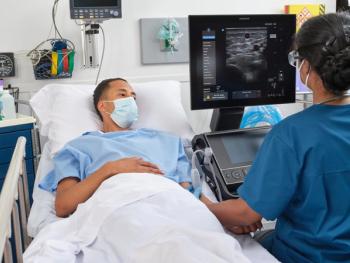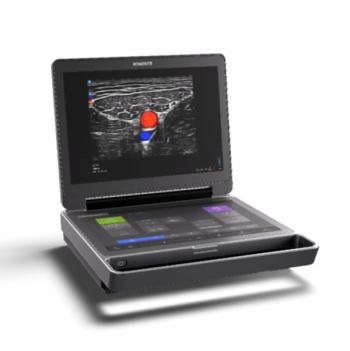
Three-D sonography used to detect bladder tumors proves promising
Three-D ultrasound examination shows the location, size, and perivesical spreading of bladder tumors just as well as conventional cystoscopy. The technique has the advantage of being noninvasive.
Three-D ultrasound examination shows the location, size, and perivesical spreading of bladder tumors just as well as conventional cystoscopy. The technique has the advantage of being noninvasive.
Bladder cancer is the fourth most common cancer in men in the U.S. and the 10th most common in women. It usually occurs in patients over 68 years of age, so a noninvasive way to evaluate cases in elderly patients could lower risks of complications.
Dr. Ercan Kocakoc and colleagues in the departments of radiology and urology at Firat University in Elazig, Turkey, published their study in the January issue of the Journal of Ultrasound in Medicine. They examined 31 patients with confirmed or suspected bladder cancer using 3D ultrasound within 15 days of conventional cystoscopy and compared the results.
Each ultrasound exam included gray-scale, 3D virtual, and multiplanar reconstruction images, which the researchers evaluated for the number, size, location, and morphologic features of lesions, providing a virtual cystoscopy.
The researchers obtained good or excellent image quality on 28 of the 31 virtual cystoscopies, or 90.3%. Conventional cystoscopy found 47 lesions in 22 patients. Virtual cystoscopy showed 41 or 87.2% of these 47 lesions.
For tumor detection, 3D sonography alone had a 96.2% sensitivity, 70.6% specificity, positive predictive value of 93.9%, and negative predictive value of 80%. A combination of gray-scale sonography, multiplanar reconstruction, and 3D virtual sonography detected tumors with a sensitivity of 96.4%, specificity of 88.8%, positive predictive value of 97.6%, and negative predictive value of 84.2%.
The researchers concluded that 3D ultrasound could be a promising noninvasive alternative to conventional methods of detecting bladder cancer, since the results of virtual cystoscopy agreed well with conventional cystoscopy.
Newsletter
Stay at the forefront of radiology with the Diagnostic Imaging newsletter, delivering the latest news, clinical insights, and imaging advancements for today’s radiologists.




























